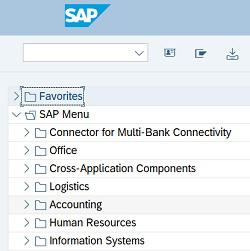7 Tips to Make Your SAP Data Ready for AI
by Malay Upadhyay
 A crucial factor behind AI functioning well is Data. A 2019 report mentioned that 96% of organizations ran into problems with AI and machine learning projects, primarily owing to data. In fact, a few years back, the Chairman and CEO at Caterpillar had suggested that they were losing $9 - $18 billion in easy sales revenue as their sales weren’t monetizing the real value of data.
A crucial factor behind AI functioning well is Data. A 2019 report mentioned that 96% of organizations ran into problems with AI and machine learning projects, primarily owing to data. In fact, a few years back, the Chairman and CEO at Caterpillar had suggested that they were losing $9 - $18 billion in easy sales revenue as their sales weren’t monetizing the real value of data.
Artificial Intelligence and S/4HANA
As you will learn in the subject of Artificial Intelligence Management, choosing the right set of AI software to leverage S/4HANA for deeper business insights or to automate any part of the process feeding or extracting data from the system, is essentially about managing the cost-benefit ratio related to data.
For starters, you would not want an AI app that either does not work with SAP or does things that S/4HANA can already manage well. More importantly, you may find that the effort needed to prepare the data for an AI model to be effective or to apply the insights from an app back into S/4HANA is simply not worth it.
While the requirements of different AI apps and solutions are not in your control, your own dataset is. This is especially true, and necessary, for a columnar in-memory platform like S/4HANA.
S/4HANA helps reduce this burden by ensuring a single data store and by limiting redundancy. In other words, it can reduce complexity and improve user experience to enable more productivity, but like any other system, it needs your support to do that well.
So whether you are using S/4HANA or another enterprise software, what does good data look like and how can you become data ready and by extension, AI-ready?
7 Tips To Help You Become Data Ready For AI
The data required for an AI solution should always fulfill a set of conditions. For ease of remembering, let's call these conditions TUSCANE, pronounced like Tuscany. Anything Tuscan is perfect like the region's finesse, but what does 'perfect' mean here?
- Any data should be Timely, which means that it is either up to date, getting updated regularly, or belonging to the time that is being analyzed. This aspect of data readiness is largely dependent on process rigor in place to capture data and employee diligence in keeping it up to date.
- It should be Usable, which generally requires data to be in one place and available without restrictions so that it can be easily accessed. For example, we cannot use customers' data even if it is available, without their explicit permission. As another hypothetical example, let’s say a logistics organization collected thousands of digital photos of its contracted drivers in PNG format in its database to feed into a Deep Learning app called FaceMe. The app can learn to recognize the faces in order to identify the contracted drivers successfully in the future. However, the organization soon finds that the robot accepts photos only in JPG format. It would now face an arduous task of converting thousands of photos into the right format for the app to understand it.
- The data should be Structured. Often, if different types of data are all mixed up and not properly arranged, it can be effectively garbage. While advanced AI techniques like Deep Learning can work with unstructured data, most AI apps you are likely to come across for regular business needs would be Machine Learning based. Their performance can be greatly improved if the fields on your SAP system are clear, delineated, and defined.
- Data should be Complete. Incomplete data has to be dealt with and filled out for AI to properly analyze information. Gaps in data are most often a result of having too many fields for employees to realistically feed information into regularly. Automation helps, as do techniques like averaging out a column of data to fill the number in missing rows, if S/4 Hana hasn’t taken care of some of that already. However, not all completion can be achieved in this way alone, and even if it is, you may face an issue with its accuracy.
- Data should be Accurate. Inaccurate or erroneous data is the number one reason for inaccurate results. The inaccuracy can be tough to track and can result from outdated information, altered business conditions, superficially filling in data, and assumed information, among others.
- Data should also be Neutral and not biased. The number two reason for inaccurate results and the number one reason to think about AI ethics is bias. Bias in data is often difficult to catch and can lead to insights that appear accurate at first but cease to be if the situation changes. Worse, the insights may continue to appear accurate even if they are not. For example, if AI were asked today to determine who has a higher earning potential between men or women based on historical data, it would likely choose the former simply because men in most cultures have historically been the bread earners in the household. Obviously, this would be the wrong conclusion.
- Finally, data should also be Enough. Going back to the face recognition example, the organization may also find that there are simply not enough photos to properly use Deep learning. Techniques like Deep Learning or even Machine Learning require a lot of data in order to be effective. We must possess enough volume of data to properly train an AI model.
Making Your Organization Data Ready
As market dominance becomes increasingly dependent on AI enablement of sales/marketing, accounting, or operational processes and on making decisions with real-time insights from AI, most organizations have to frustratingly wait before they can leverage AI, while they try to fix gaps in their data.
No AI can work without data readiness. Few SAP managers and administrators realize the power they now have to save their organization millions of dollars, and give it up to a year’s worth of lead in the competitive race, simply by making it data ready.
If you would like to become an expert in leveraging AI solutions successfully on SAP for your organization, take this crash course on Artificial Intelligence Management today.
by Malay Upadhyay
More Blogs by Malay Upadhyay

The Secret Sauce to Unleashing SAP's Power
In my last AI blog, 7 Tips To Make Your SAP Data Ready For AI, I ...
Related Blogs

What is SAP HANA? A Quick Overview
SAP HANA is different from its architecture – it is an in-memory...

A Look at SAP Business Partner
SAP Business Partner is a person, organization, group of persons, or group of...
.png)


